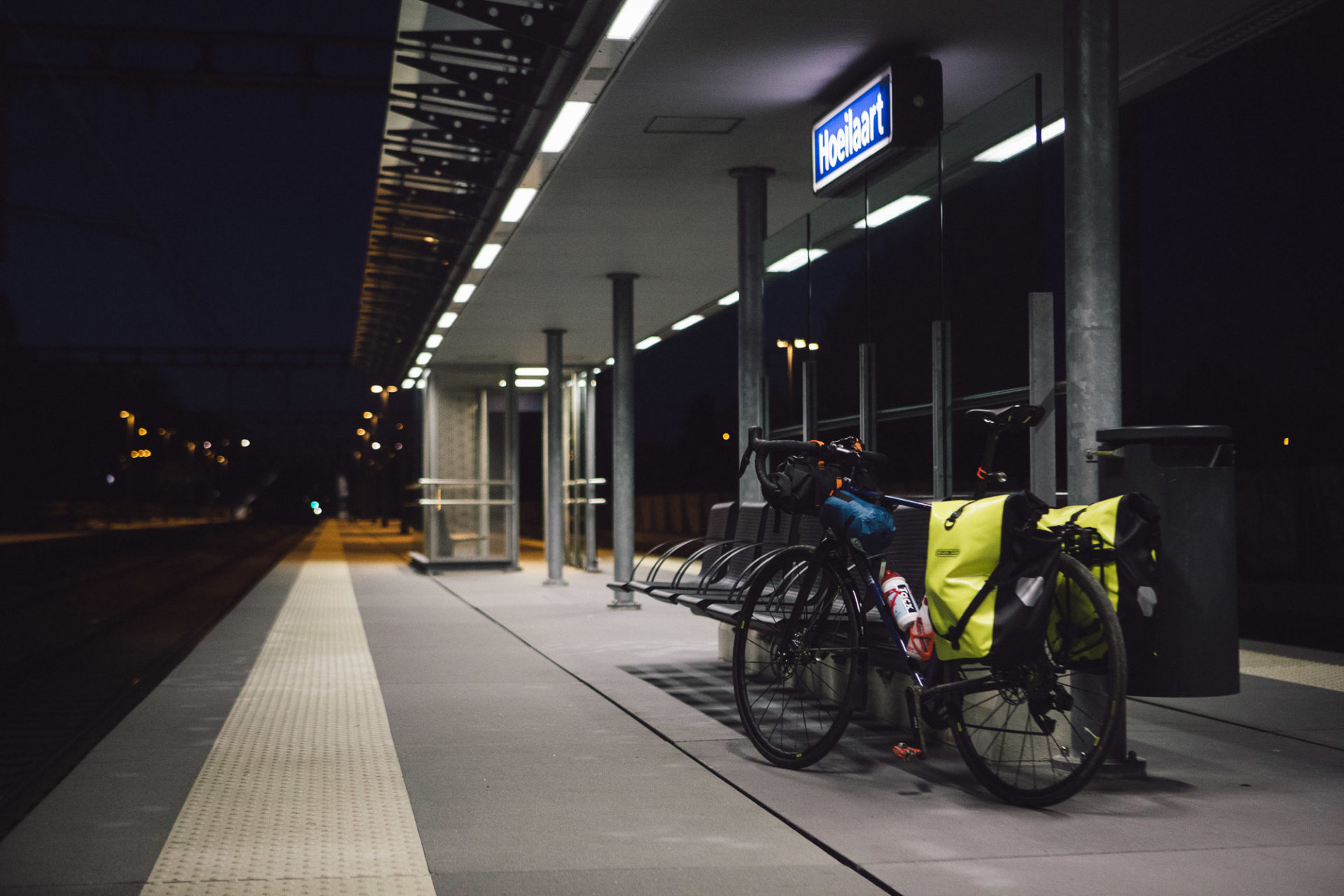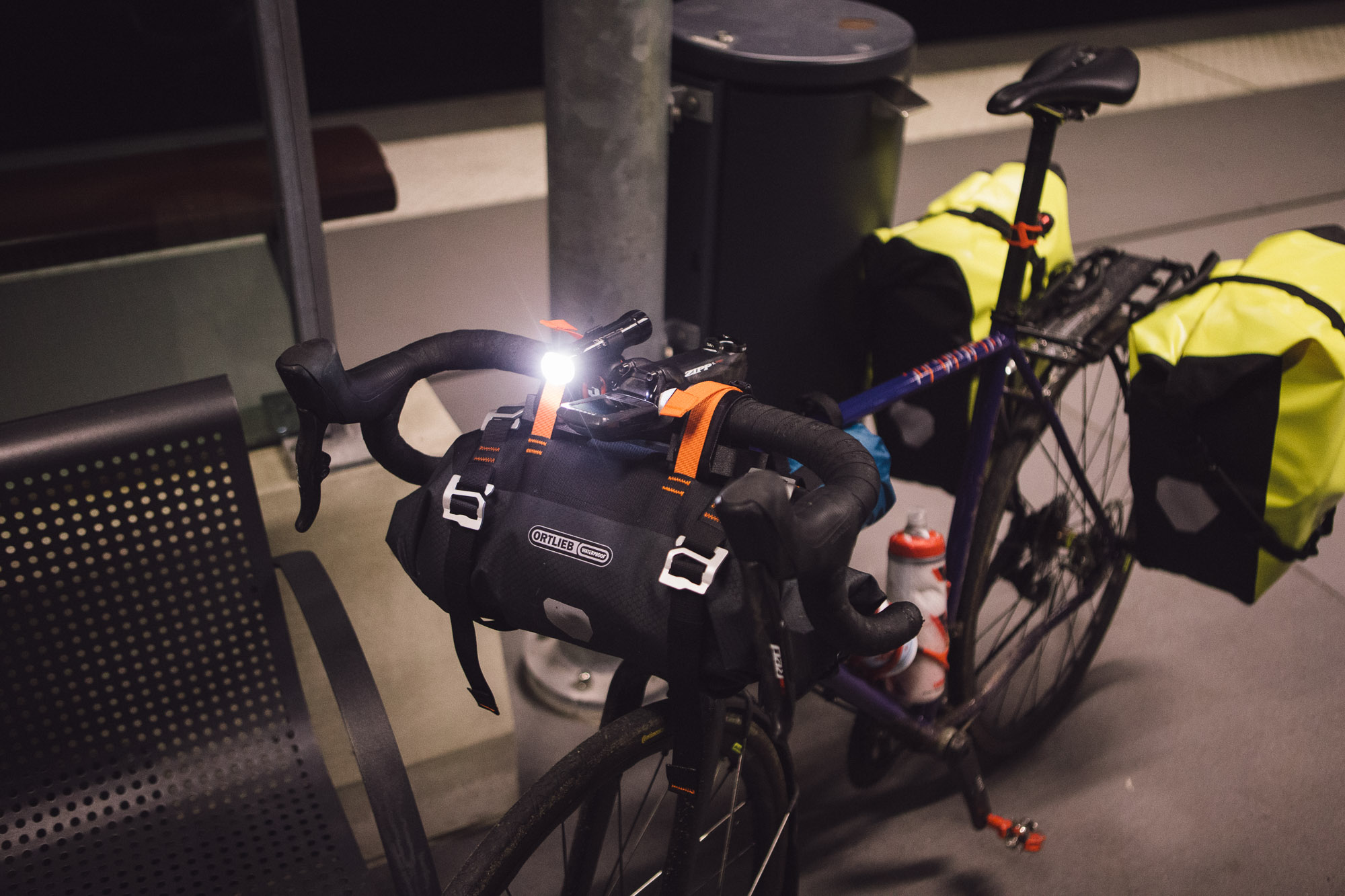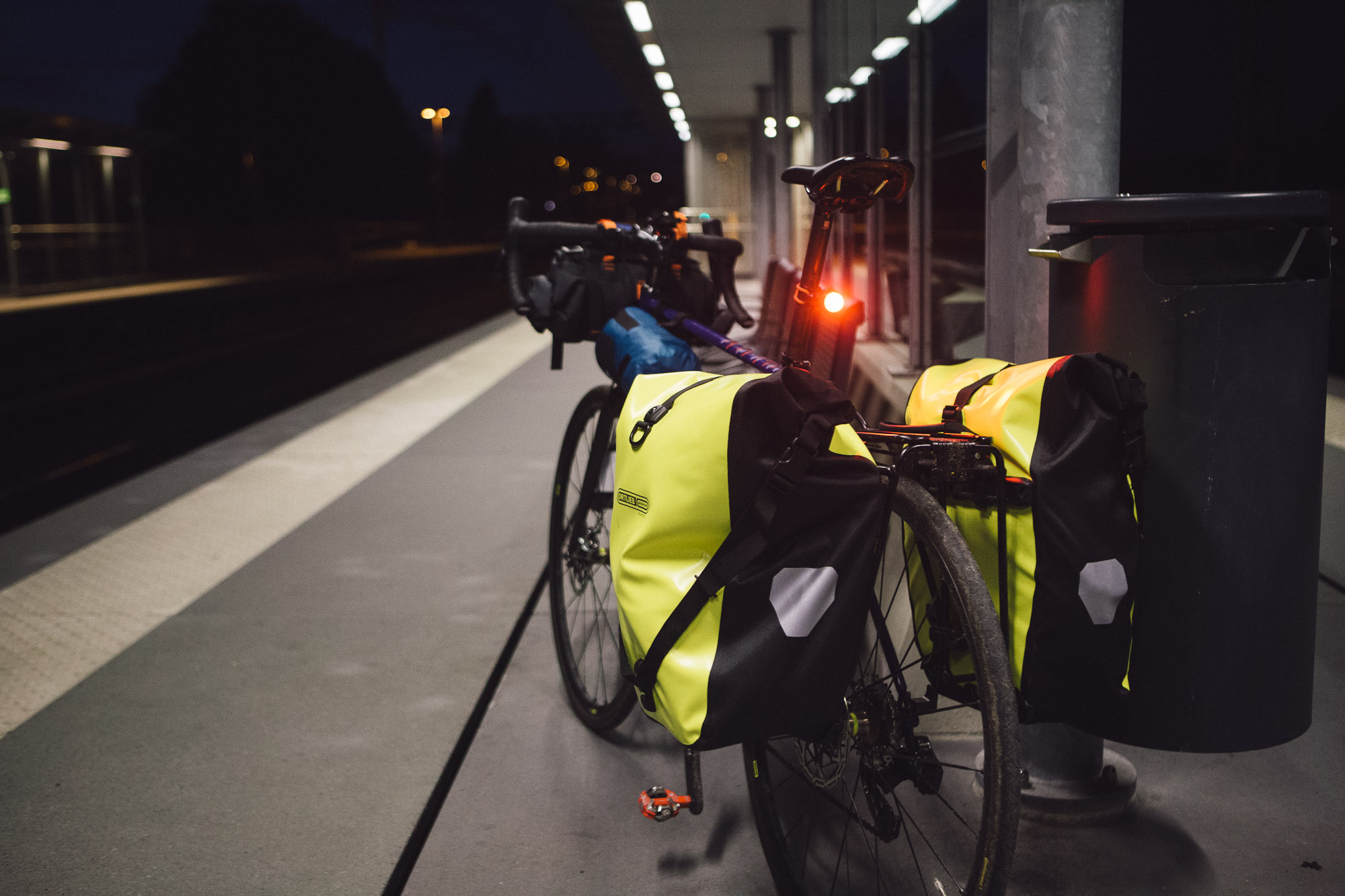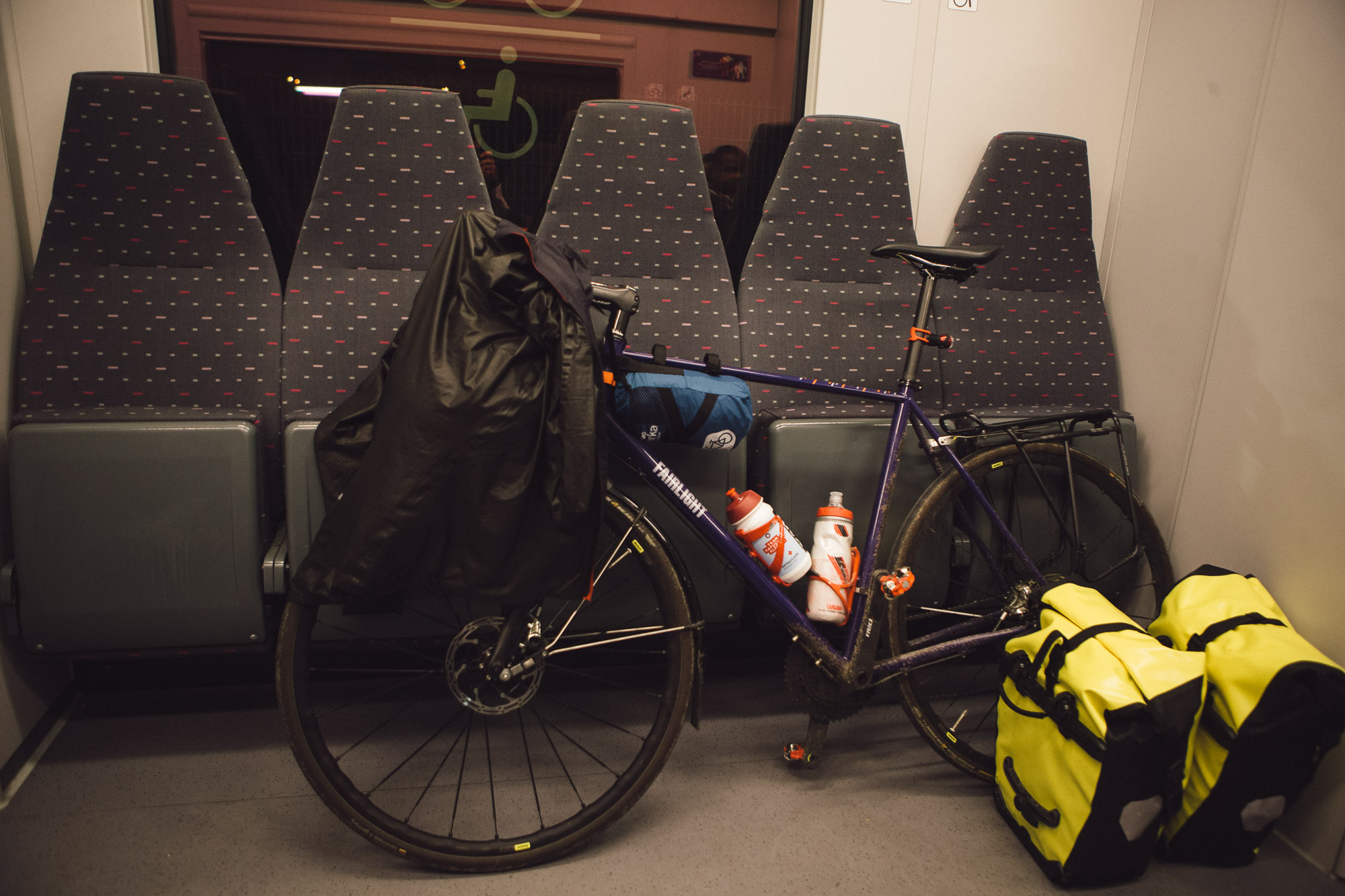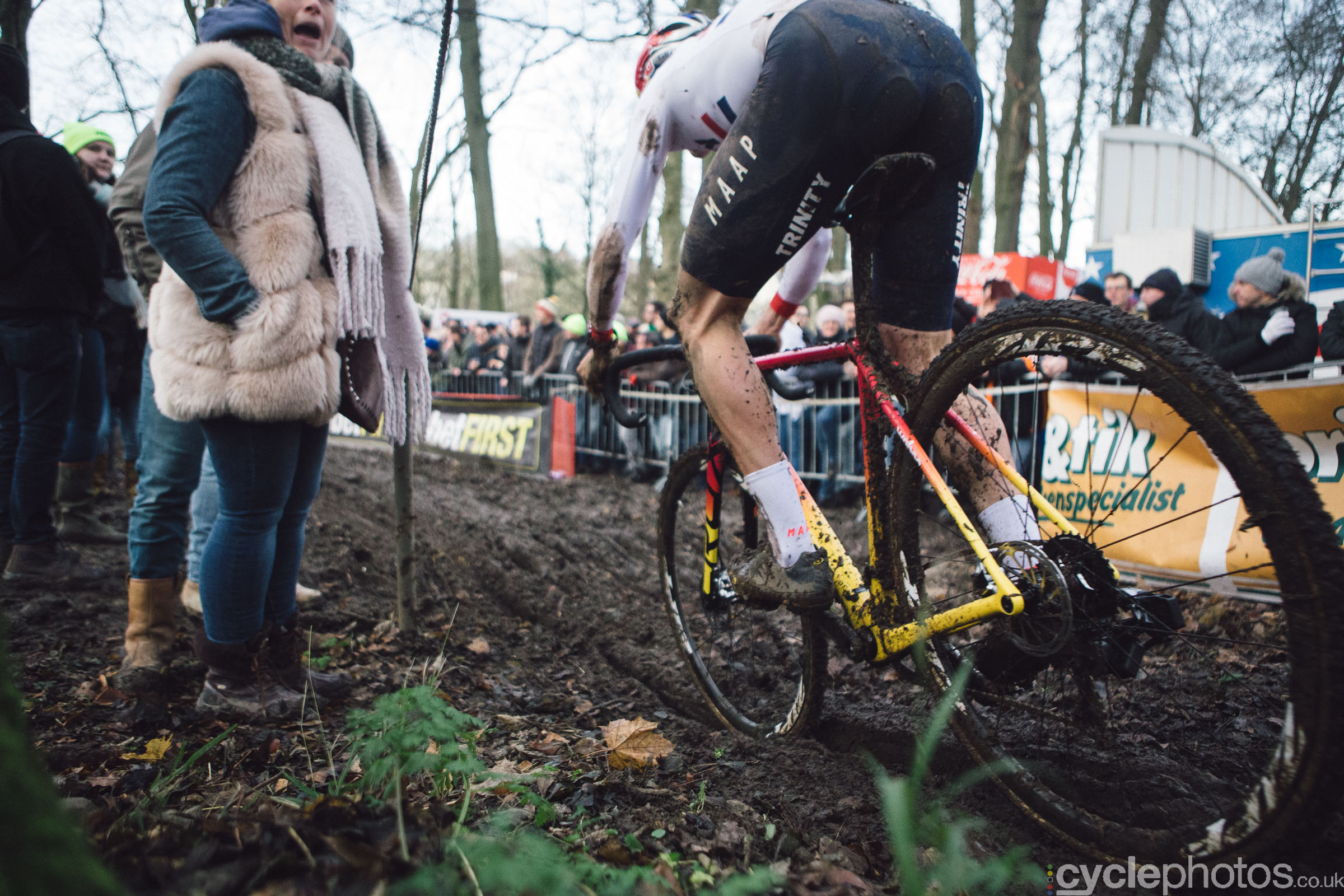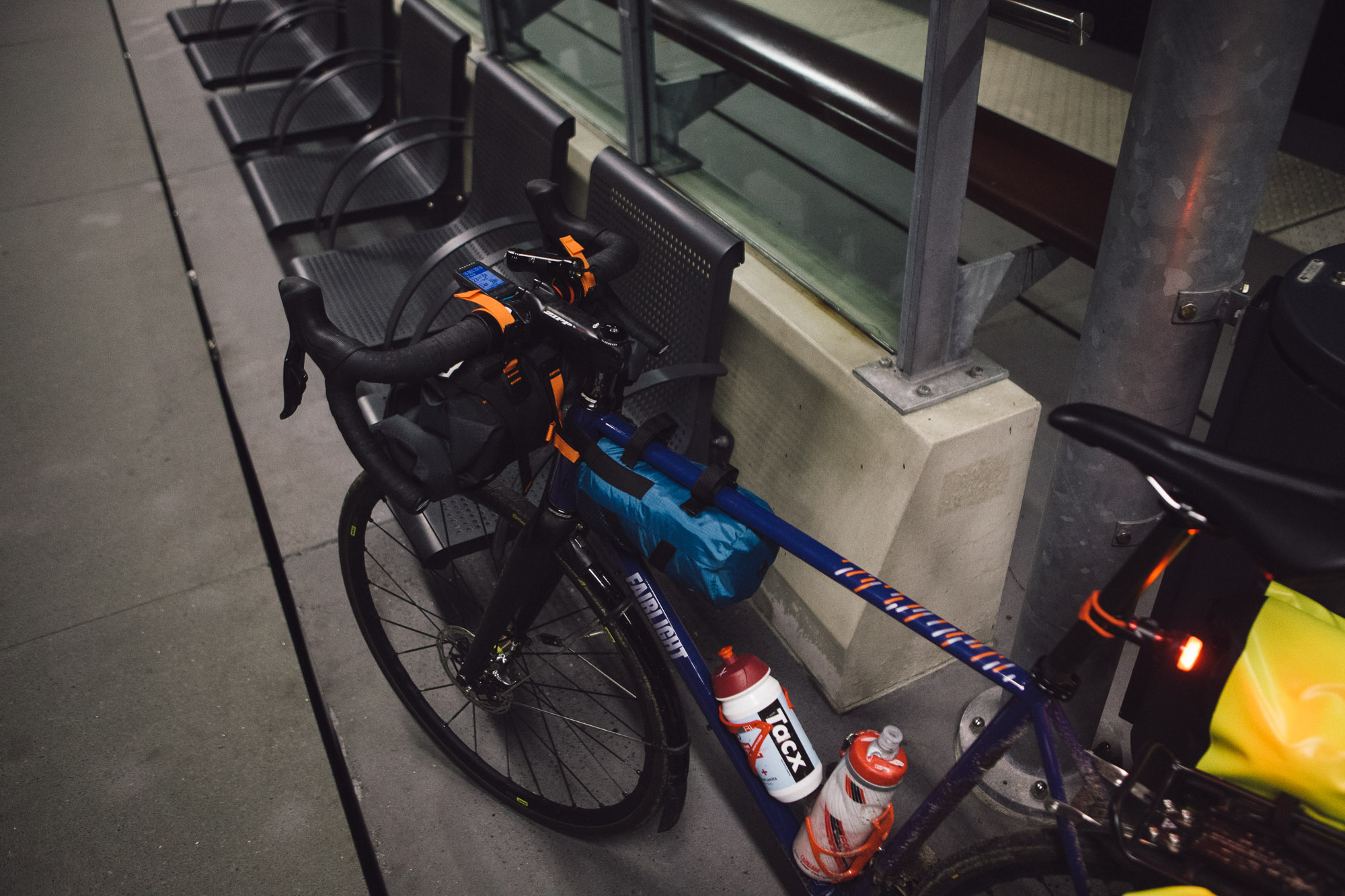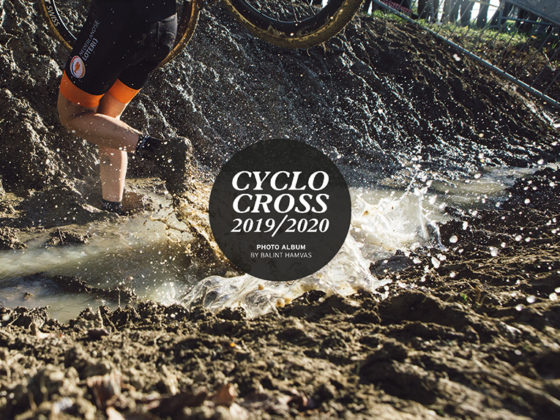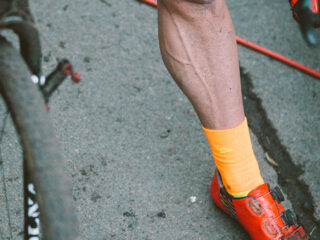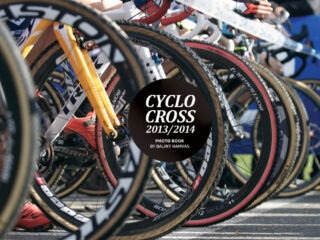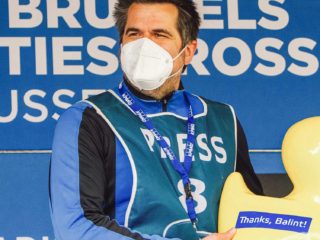I’ve always tried to be eco-conscious, but I have to admit, with my line of work, it can be challenging sometimes. In Part 1, I talked about how I tried (and mostly succeeded) to get to most races outside of Belgium by train instead of flying. At the beginning of last season, I looked at my weekly commute to Belgium and I wondered if I could somehow find a way to make all those trips without a car. Can I complete these journeys on a bicycle? Can I pare down my kit to a size that can be hauled feasibly on a pushbike?
After some experimenting, I’ve managed to squeeze everything I needed into two standard, 20L Ortlieb bags, my camera bag and a smaller handlebar bag. But that all still weighed over 30 kg, which is a lot. I concluded, that I needed an e-bike. I figured that any e-bike would do, as long as it has a pannier rack on the back. As I wanted to just trial this concept, I didn’t want to go ahead and buy one, so I was trying to find a partner, who’d supply me an e-bike for a longer period. This took longer than I had anticipated by the end of November, I still didn’t know if it was going to happen. I grew frustrated and I decided to go ahead on my regular road bike, my trusted Fairlight Secan. It has pannier rack eyelets, I bought a set of panniers, what can go wrong? As it turned out, many things, but I’ll get to that in a moment.
First, I had to figure out how to get to Belgium on a bike. My first thought was the Eurostar. It seemed like an obvious choice, until I read their bike policy. It’s not very bike-friendly. You can either box it up, but then you’d have to arrive at the terminal 90 minutes prior to departure, or you can travel with it fully assembled, but then it costs more and they only accommodate two bikes per train. The first option is too inflexible, the second is too fraught – what if I’m the third cyclist that weekend? Cost was also a problem. The lowest fare is £29 one way, plus £35 one way for the bike – that’s £128. On top of that, there is about £20 for the train ticket to get to London St Pancras in the first place, because you can’t board (or get off, for that matter) the Eurostar with a bike at Ashford and then there are the train tickets in Belgium itself, which would have been around £30-40 on average. That would have brought the total cost to around £200, if I booked every single one of my trips many, many months ahead, leaving me with no flexibility.
The other option is the ferry. Take the train from Tonbridge to Dover (direct train, £28 return), take the ferry to Dunkirk (£28 each way), then ride 36 km to De Panne, the closest train station in Belgium and then reach any destination within Belgium in a few hours. Why not take the train from Dunkirk to Lille, you may ask? Because bikes are not allowed on trains in that part of France. I had my plan and I was curious to see how it panned out.
The weekend I picked was in December, with races in Ronse and Overijse. The trip started rather badly, it was dry when I left Tonbridge at 10pm but by the time I arrived at Dover, it was raining heavily and the fact that the pannier rack didn’t allow me to keep the mudguard on on the back was not helping. What I had also underestimated was how heavy and wobbly the bike would be. The centre of the gravity was so high, that pedalling out of the saddle was nearly impossible and even keeping the bike straight while pushing proved to be a challenge.
As I pushed the bike out of the train station in Dover, a cold downpour greeted me. It was around midnight and I was pedalling towards the ferry terminal, questioning the wisdom of my plan after just two kilometres. After checking in, I spent the time in the warm and dry waiting area and then boarded the ferry. As a cyclist, you are the very first person/vehicle to board it or the very last. It was the latter that morning and it was quite good fun, actually, to roll through a completely empty ferry on your own. I used the two hours of the crossing to catch up with some sleep and I was ready to roll when we reached the shores of France at 5am. The rain stopped and there was a strong westerly wind.
As I started my ride towards De Panne, on the dark, windy road, I felt a weird sense of contentment. I was enjoying the tailwind and it was a special experience to roll past first a petrochemical plant, then the quiet and deserted Dunkirk. It felt like I was doing something silly but fun. It was all quiet, calm and weirdly enjoyable.
The ride itself was quite straightforward, I was following the pre-planned route and it took me to De Panne with just a few minutes to spare before the train to Gent left. It was quite telling though, that my average speed was 19.7 km/h (around 12 mph), even though I had a quite strong tailwind. Having 30 extra kilos on my back and the panniers did take its toll.
What I didn’t expect was how hard it can be to board trains in Belgium. Either the platforms are too low or the train floor is too high, but even I, as a young(ish) and able man, was struggling to lift my bike onto the train. In fact, the only way I could do that was to remove the bags and chuck them on the train first. I have no idea how disabled people, people with pushchairs or the elderly use the trains.
The train ride to Gent-St Pieters was ok, it was nice and warm on the train and it lasted long enough for everything to dry. At Gent, I changed onto a train to Ronse. Turns out, there are no escalators or elevators to get down to the concourse. Again, I don’t know how disabled people, people with pushchairs or the frail get around.
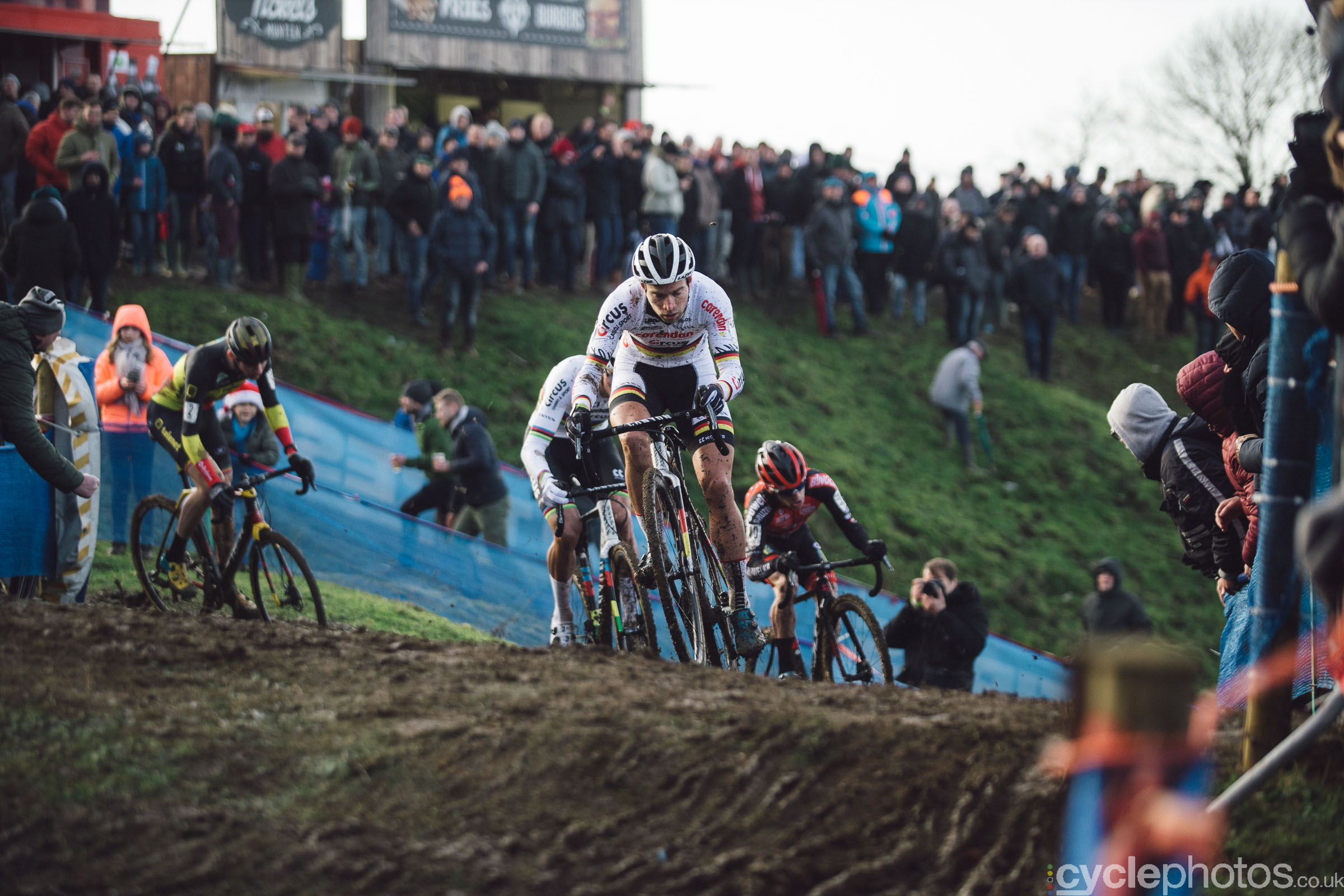
The ride to race venue was uneventful but rather hard, as I had to climb Bechemsesteenweg, which was not my favourite thing. With not much sleep and all the extra cycling, I was really tired by the end of the day, so I welcomed my friend, Brook Watts’ offer to give me a lift to Sinaai, where I was staying overnight.
Sunday was a new day and what a day it was. While Saturday was all doom and gloom and rain, I woke up to a wonderful sunshine on Sunday. It was a lovely way to start the day, just ride my bike and enjoy the weather. After changing a train in Brussels, I got off the train at Hoeilaart and rode to Overijse. The sun was shining, it was downhill all the way there and suddenly this all seemed like a good idea. And the best bit was that I didn’t have to worry about parking! After the race, I rode back to Hoeilaart, took the stairs back to platform and then started a long, 3+ hours journey back to De Panne.
At that point, I only had to cover 10 km to the airbnb in the middle of nowhere. It took some time to connect with the host, not having much reception and the time being 10pm didn’t help either.
Next morning, I left at 5am with the aim to reach Dunkirk by 7am. With only 28 km left and with a fairly strong southerly wind, I managed to cover the distance quite quickly. From then, it was easy, I just rolled on the ferry and then off in Dover and didn’t even have to wait much for the train back to Tonbridge.
My conclusion? On the one hand, I proved to myself that it is possible to do a weekend of shooting cross in Belgium just by using my bike and public transport. But it was also obvious, that it is not something I would like to do again in the near future. Riding with over 30 kg of a varied assortment of cycling gear and camera gear was not fun and not sustainable, at least not every week over the winter. So I knew that doing it with a regular push bike is out. But what about an e-bike? That’s coming in Part 3.
